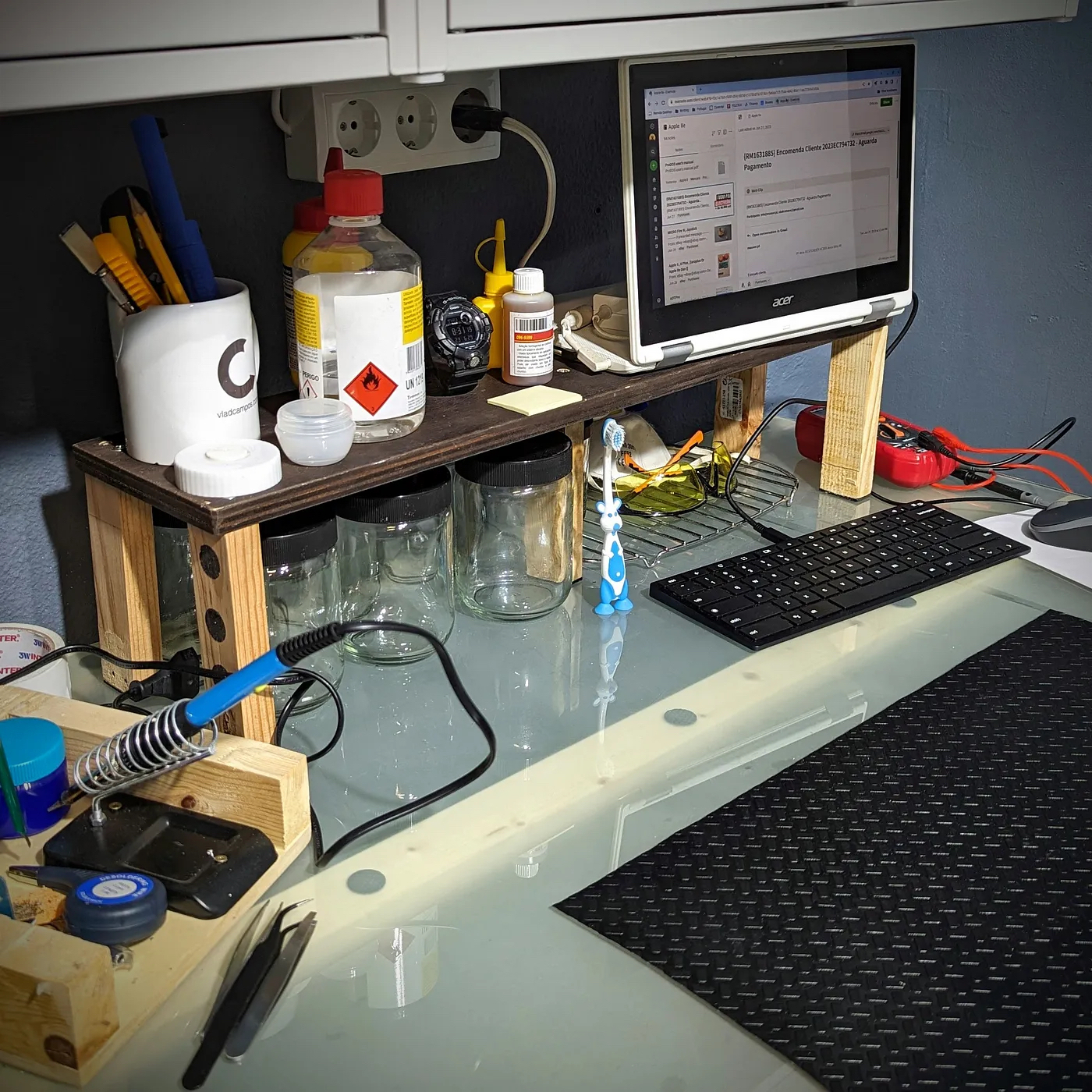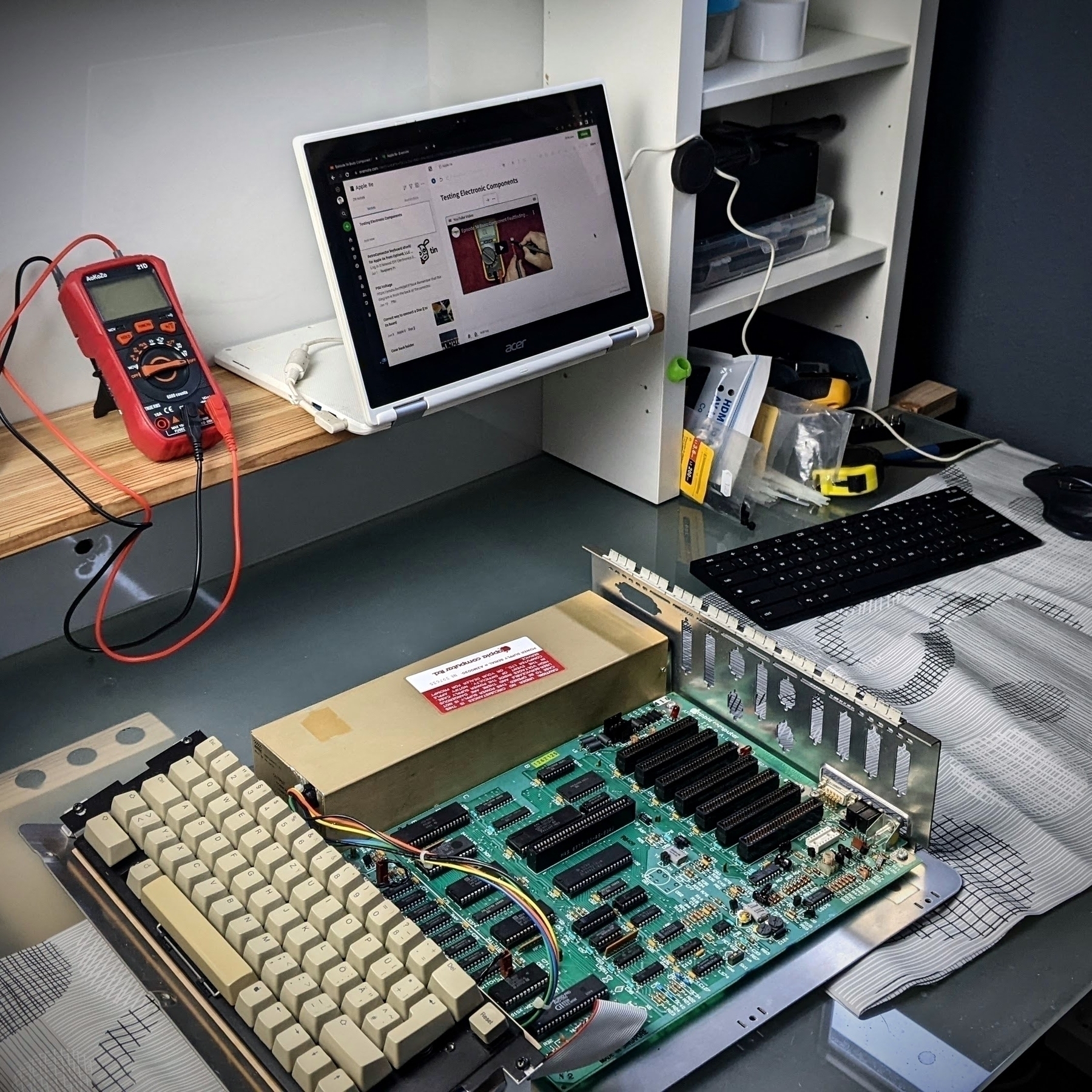Apple IIe
Without experiencing the unknown variables, it’s impossible to organize efficiently
The best way to organize things, whether they’re physical or digital, is to accept the mess for a while. That’s why my strategy for organizing things is to always start with a messy environment, a blank canvas to play with. However there’s a catch: I have to pay close attention to what I’m constantly searching for and using.
It is only after rearranging things again and again and learning my necessities that I am finally ready to begin building the system that will meet my needs. But, there is no doubt in my mind that that will not be the final version. The world around us constantly changes, and we must adapt to keep up.
The tricky part is figuring out the exact moment when the messy stage has to give way to some order. I like to use a concept I borrowed from economics: Transactions Costs. In other words, if the mess is making me less and less productive, it’s time to pause and organize by choosing the best workflow I’ve come up with so far.
If you haven’t already, I encourage you to watch the video below. It’s about an Evernote notebook being built from empty to fully functional. It started out messy, and I added tags, links, etc. as I learned what I was constantly looking for and using.
And like I said before, it’s a strategy that works in both the digital and physical worlds. Last week, I finally organized my workbench inspired by the way I moved objects around when I was working on the Apple IIe restoration project. I’m pretty happy with the final result, but I already had new ideas for it.
The messy approach is also a way to foster creativity. There are many good books about this subject. There’s one literally titled Messy, but The Click Moment and Algorithms to Live By also discuss it.
Moving things around forces us to look at a problem from a different perspective, which helps us come up with unexpected solutions. But it is important to keep in mind that the project on which we are currently working is not our sole concern. In my case, the messy workspace was also a project in progress.
Take a look at the shelf and the soldering station; they are all made from scrap wood. By the way, I love that cool industrial vibe. You can even tell from the black circles on one of the shelf legs that the piece of wood was once below the table glass. It was a test; I was trying to figure out how many crossbars I needed to keep everything stable and I ended up replacing the studs with the thicker ones that are there now. As for the rest of the replaced pieces wood, they were used on other projects.

But there are more repurposed materials. The desk itself is made up of the top glass of an old kitchen table, supported by some cheap Ikea trestles. As for that Chromebook, it will not get Chrome OS updates anymore, but it is still good enough for Google searches and the Evernote web client.
So, the next time you are working on a complex project, don’t be too hard on yourself. Every so often, a little mess is what you need to unlock a solution that was always there, but you couldn’t see.
By the way, switching to another project also works, but that’s a story for another time.
Generations
After helping me fix the issue with the ROM chips a few weeks ago, my son got to play Gremlins on the Apple IIe.

Is your computer truly yours?
It is remarkable how contemporary technology is built around the loss of control over our devices. In contrast, the Apple IIe, which is considerably older, is so open to experimentation and modifications.
One or two years ago, I wanted to try ChromeOS Flex and decided to install it on my old MacBook Air 2012. I enjoyed the process of installing it and had fun with the OS. Now I needed macOS back on the computer to be able to use it on the Apple IIe restoration project, but when it came time to reinstall macOS, things didn’t go well at all.

macOS Recovery
If you start macOS holding command + r, you’ll be prompted to reinstall the OS. I was counting on this when I decided to try ChromeOS Flex. Anyway, I tried all possible variations of the command + r command, but at some point, near the end of the process, a glitch would always stop the installation.
Another issue was that the countdown to the end of the process would display a huge negative number, which would also result in an error message. I searched online and found out that the negative number was related to a network problem, but my network and internet connection were working perfectly well.
I also tried to reinstall macOS by holding the option key. This is how you tell the Mac to search for external drives when it starts up. However, I was unsuccessful there as well. I was probably doing something wrong because the system would never recognize the installation disk on connected drives. It is also possible that the bootable part of the disc was damaged during the installation of Chrome OS Flex. I don’t know. Regardless of the reason, I am puzzled as to why I was encountering such difficulty. After all, it is my computer.
Downloading macOS
We are provided with downloads of older versions of the operating system, but I challenge you to try installing it on a computer with a dead or new hard drive. One must go through numerous workarounds to make it work. By the way, during my saga I also learned that Apple does not provide any official instructions for how to install an older OS over a newer one. Even worse, it tells us that we cannot do it.
Carbon Copy Cloner
After jumping from one website to another and failing miserably, I remembered that my wife didn’t get rid of her old Mac mini from 2012. My new plan was to clone the Mini hard drive using Carbon Copy Cloner. Of course, I had problems there as well. First, I had to find an older version of the program that worked with macOS Mojave. Next, the mini drive is 500 GB, and the Air’s is 64 GB.
To make a square fit into the circle, I created a new admin user (me) on my wife’s computer, and on Carbon Copy Cloner, I unselected her user and all the non-essential files before cloning. Of course, figuring out what are the essential files is easier said than done. After lot of trial and error, I was successful, but I would not be able to use this same strategy on a slightly newer Mac. My 2012 machine has a removable SSD, and I happen to have the correct USB enclosure. In other words, I could remove it from my computer and connect it to my wife’s Mini via USB.
My computer finally started, but the OS was extremely slow. It would take several minutes to boot, and the mouse was jumping all around the screen every time I moved it. Thinking that some issue could have occurred during the cloning process, I repeated it several times, but I had no success.
It was time to take a break, like I usually do when I get stuck.
The next day, I remembered that macOS has an Activity Monitor. I ran it, but to my surprise, the total CPU load was over 90%, even though no software or process was taking more than 5% of the CPU time. Back to Google!
Resetting PRAM and SMC
In the end, there wasn’t anything wrong with the cloning process. The issue was with the different computers. Using Carbon Copy Cloner to make a copy is like transplanting a brain from one person to another. The new brain in my MacBook Air was from a Mac Mini. To put it simply, I had to help it adjust to its new body.
I don’t have enough technical knowledge to explain this, but there’s a way to reset basic macOS configurations called PRAM and SMC. I reset them, and the OS started working like a charm.
Finally!
Anyway, all this was just another step in my Apple IIe restoration project. I could finally install the ADTPro software on the MacBook Air to copy old software to the IIe. Of course, I hit a new brick wall. But this is a story for another day.
Apple IIe not working
The Apple II was the first computer I ever used. This is a IIe I recently got on eBay, but unfortunately, it is not working. When I plugged it in, I saw smoke coming from what, I think, is a capacitor on the C15 position on the board. Next step, figure out what that part actually is and order a replacement.

I have no experience with electronics, multimeters etc. This is definitely going to be a long-term adventure.